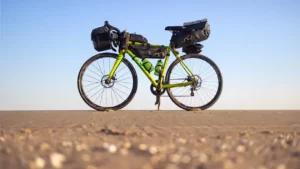IL 2024 Olympic Games promise to be a spectacular showcase of athletic prowess, and among the myriad of sports, Cycling BMX Freestyle stands out as one of the most exhilarating. As riders take to the air, executing gravity-defying tricks, the sport captivates audiences with its blend of creativity, skill, and daring. This year’s competition is set to elevate the sport further, highlighting its artistic and technical dimensions. In this blog, we will give a comprehensive introduction to this game’s rules, scoring system, competition format, 2024’s winners, and pro freestyle BMX bikes.

What are the Results of the 2024 Olympic Cycling BMX Freestyle?
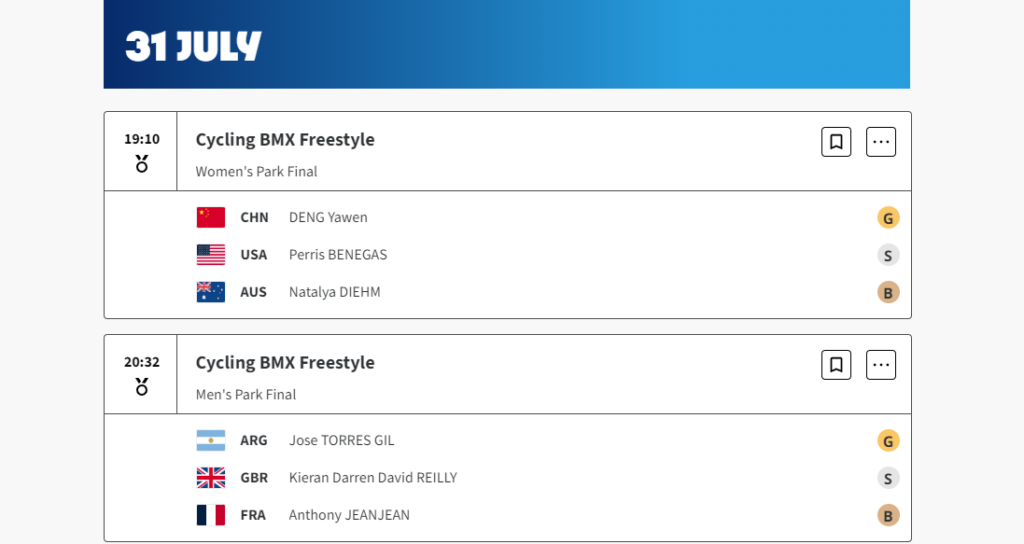
IL 2024 Olympic Cycling BMX Freestyle competition witnessed extraordinary performances, with athletes pushing the limits of their abilities to claim the prestigious medals.
IL Women’s Park Final was particularly thrilling, with China’s DENG Yawen delivering an outstanding performance. Scoring an impressive 92.5, she secured the gold medal, dazzling the judges with her flawless execution and innovative tricks.

The silver medal was awarded to Perris BENEGAS from the USA, who achieved a score of 90.70, showcasing remarkable skill and creativity.

Australia’s Natalya DIEHM rounded out the podium, earning the bronze medal with a commendable score of 88.8, demonstrating great control and technical prowess.

In the Men’s Park Final, the competition was equally intense. TORRES GIL Jose from Argentina claimed the gold medal with a phenomenal score of 94.82, leaving the audience in awe of his high-flying maneuvers and impeccable execution.
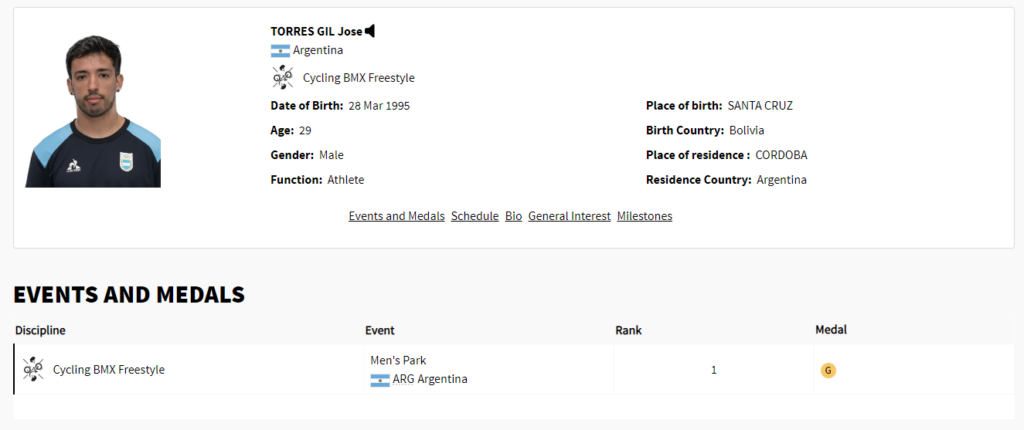
REILLY Kieran Darren David from Great Britain secured the silver medal with a score of 93.91, delivering a performance marked by daring and precision.

JEANJEAN Anthony from France earned the bronze medal with a close score of 93.76, showcasing his exceptional versatility and creativity on the course.
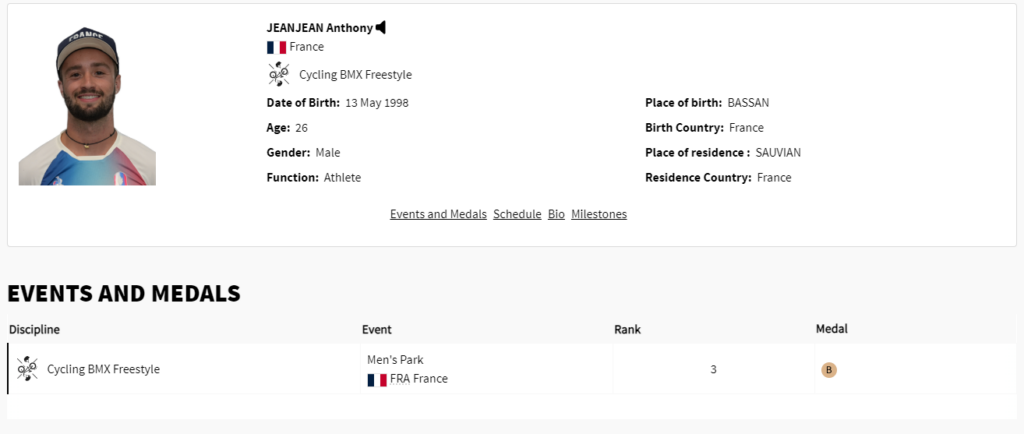
These results highlighted the global talent in BMX Freestyle and set a high standard for future competitions.
What Is Cycling BMX Freestyle?

Cycling BMX Freestyle is an exhilarating form of bicycle motocross that emphasizes stunt riding and creativity. As an extreme sport, it has evolved from traditional BMX racing and now encompasses five distinct disciplines: street, park, vert, trails, and flatland. Each discipline offers a unique environment and set of challenges, allowing riders to showcase a diverse range of skills.
The sport’s origins can be traced back to the late 1970s and early 1980s in Southern California, where enthusiasts began modifying their BMX bikes to perform tricks and stunts. What started as a fringe activity quickly gained popularity, leading to the establishment of competitions and the development of specialized equipment.
In June 2017, the International Olympic Committee recognized the growing appeal of BMX Freestyle and announced the inclusion of Freestyle Park as an official Olympic event. This landmark decision allowed the sport to debut at the 2020 Summer Olympics, bringing it to a global audience and cementing its status within the world of competitive athletics.
The freestyle park discipline, in particular, has captivated audiences with its dynamic and visually stunning performances. Riders navigate a course filled with ramps, rails, and other obstacles, executing a series of tricks that demonstrate their technical prowess and creative flair. The inclusion of BMX Freestyle in the Olympics has not only elevated the sport’s profile but also inspired a new generation of riders to push the boundaries of what is possible on a BMX bike.
How Many Contestants in BMX Freestyle at the Paris Olympics?
The BMX Freestyle competition at the Paris 2024 Olympics will feature a select group of elite athletes, with a total of 24 contestants. This includes 12 men and 12 women, representing the pinnacle of talent in the sport worldwide.
How Does BMX Freestyle Work at the Olympics?
The event typically follows a format that includes qualifiers, semi-finals, and finals.
In the qualifiers, each rider performs two runs, with the best run counting towards their score. The top scorers advance to the semi-finals, where the process is repeated. The final round features the highest-scoring riders, who again perform two runs each. The best run from the finals determines the final ranking and medal winners.
Each run lasts for 60 seconds, during which riders execute a series of tricks and maneuvers on a park course filled with various obstacles such as ramps, bowls, and rails.
How Is BMX Freestyle Scored at the Olympics?
Judges award scores ranging from 0 A 100 points for each run based on the “overall impression,” taking into account criteria such as:
- Difficulty of Tricks: The complexity of the tricks performed.
- Progression: Riders who land tricks that have never been done before showcase innovation and push the boundaries of the sport.
- Variety of Tricks: Judges look for various maneuvers, avoiding repetition to score higher.
- Creativity of Tricks: Original and unique tricks that reflect the rider’s creative approach are scored higher.
- Execution: The precision and control with which tricks are performed. Per esempio, in a Superman trick, the rider should extend their arms and legs fully.
- Landing Tricks Cleanly: Landing tricks without errors, such as putting feet down.
- Amplitude: The height achieved during aerial tricks, known as amplitude.
- Flow: A smooth and seamless run, with tricks flowing naturally from one to the next.
- Creative Use of the Course: Find the unique lines and creatively use the course’s features.
- Risk Factor: The level of danger inherent in the tricks performed.
- Stile: Personal flair and the ability to make tricks add to a rider’s score.
What Is a Freestyle BMX Bike?
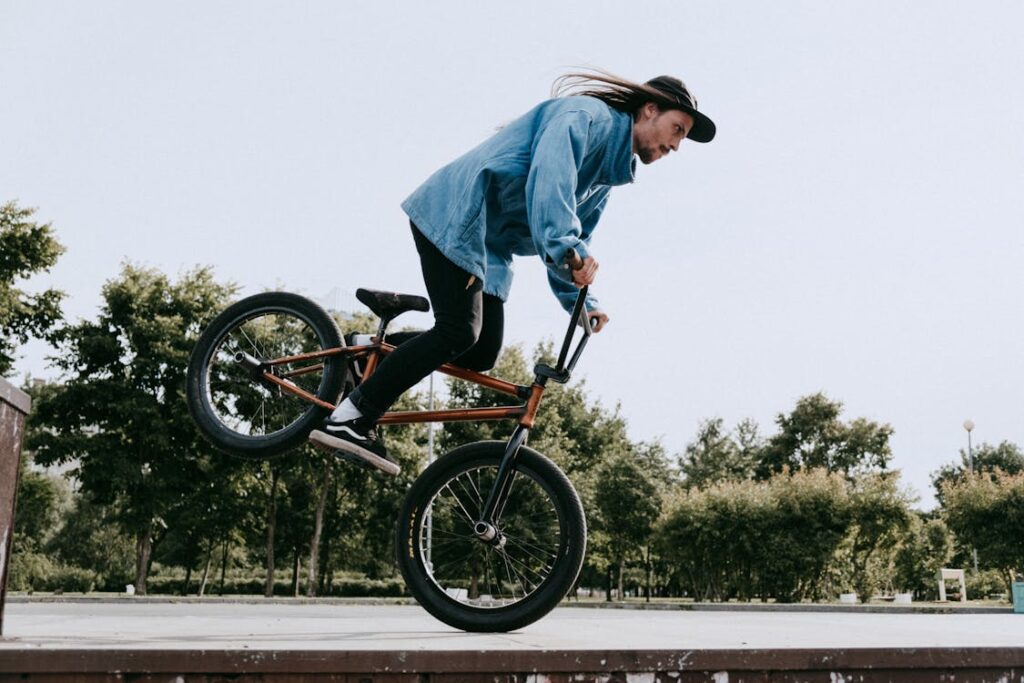
A Freestyle BMX bike is a specialized bicycle designed for performing tricks and stunts. It features a robust and lightweight frame, typically constructed from chromoly steel or aluminum, to withstand the demands of extreme riding. The bike is equipped with a gyro braking system to allow for uninterrupted handlebar spins and pegs on the axles for grinding. Its design emphasizes durability, manovrabilità, and versatility, essential for executing complex maneuvers and achieving peak performance in BMX Freestyle competitions.
Technical Specifications of Olympic-Standard BMX Bikes
Olympic-standard BMX bikes are meticulously engineered to meet the rigorous demands of competitive freestyle riding. Key technical specifications include:
- Frame Material: Typically made from high-strength chromoly steel or lightweight aluminum to balance durability and weight.
- Frame Geometry: Features a compact design with a short top tube and rear end to enhance maneuverability and control.
- Dimensione della ruota: Standard 20-inch diameter wheels provide a balance of stability and agility, crucial for performing tricks.
- Suspension: Most freestyle BMX bikes are designed with a rigid frame and fork, eliminating the need for suspension to maintain a lower weight and greater precision.
- Sistema di frenatura: Equipped with a gyro or rotor braking system to allow for full handlebar rotations without interference from brake cables.
- Pegs: Often fitted with pegs on the front and rear axles for grinding tricks on rails and ledges.
- Handlebars: Typically made from strong, lightweight materials with a high rise for better control and leverage during tricks.
- Cranks and Bottom Bracket: Designed for strength and durability, with a 3-piece crankset and sealed bottom bracket to handle the stresses of high-impact tricks.
Differences Between BMX Freestyle and Other BMX Disciplines
BMX Freestyle distinguishes itself from other BMX disciplines through several key differences:
| Aspetto | BMX Freestyle | BMX Racing |
| Focus and Environment | Performing tricks and stunts; typically in skateparks or flatland | High-speed racing on dirt tracks with obstacles |
| Bike Design | Equipped with pegs for grinding; gyro braking system for handlebar spins | Aerodynamic frame; minimalistic design for speed |
| Course Features | Ramps, bowls, rails, and various obstacles for trick execution | Jumps, berms, and straights designed for racing |
| Judging Criteria | Difficulty, creativity, execution, and style of tricks | Speed and placement across the finish line |
| Trick Execution | Emphasizes artistic and technical execution of tricks such as flips, spins, and grinds | Focuses on speed and racing skills, with less emphasis on tricks |
Innovations and Technology in BMX Bikes

The world of BMX biking continually evolves with advancements in technology, pushing the boundaries of what riders can achieve. This section explores the innovations shaping the sport, focusing on the latest developments in the best freestyle BMX bikes.
Advancements in BMX Bike Design
Recent years have seen significant advancements in BMX bike design. Bike Manufacturers are constantly experimenting with new materials and geometries to enhance performance. Fibra di carbonio, for example, is increasingly used for its combination of strength and lightness. Customizable components, such as adjustable brake levers and interchangeable parts, allow riders to tailor their bikes to their specific needs and preferences.
Impact of Technology on Performance
Technology has profoundly impacted performance in BMX Freestyle. The use of computer-aided design (CAD) and 3D printing allows for the creation of more precise and innovative bike parts. Advanced suspension systems and shock absorbers have also been developed, providing riders with better control and comfort. These technological advancements not only enhance the riders’ ability to perform complex tricks but also contribute to their safety, reducing the risk of injury.
Conclusione
As the 2024 Olympic Games draw to a close, the Cycling BMX Freestyle event will undoubtedly leave a lasting impression. This year’s competition has showcased the incredible talent and dedication of riders from around the world, pushing the sport to new heights. With continuous innovations in bike technology and ever-evolving techniques, the future of BMX Freestyle looks brighter than ever. The blend of athleticism, creativity, and technological prowess ensures that BMX Freestyle will remain a thrilling and dynamic sport for years to come.




